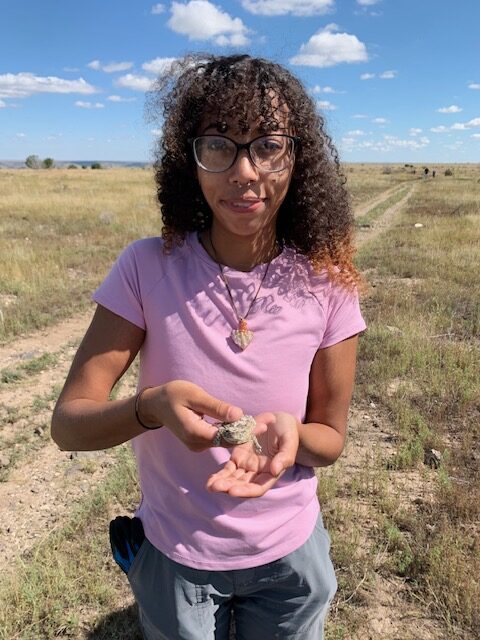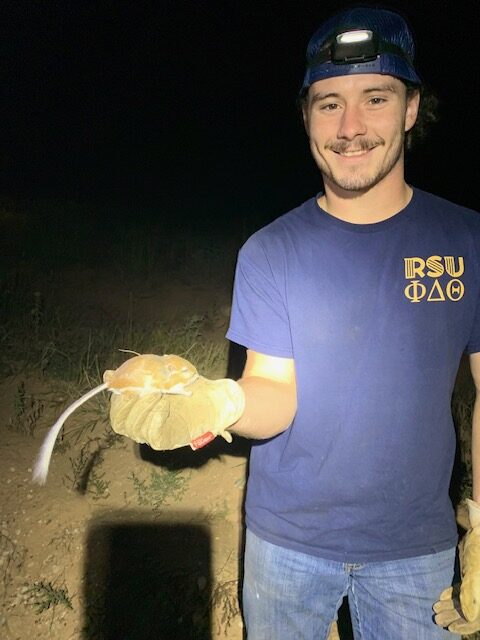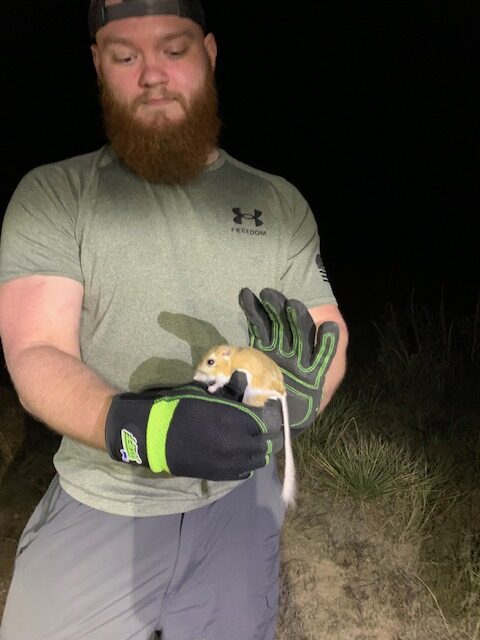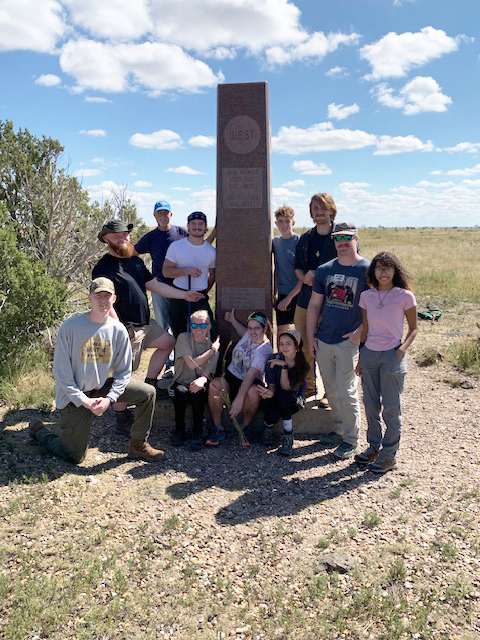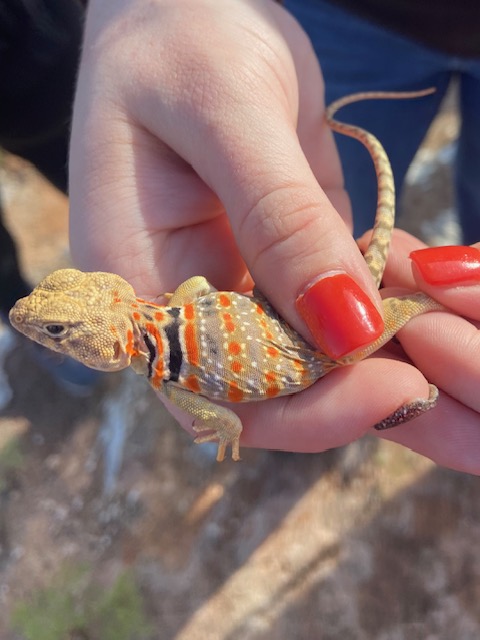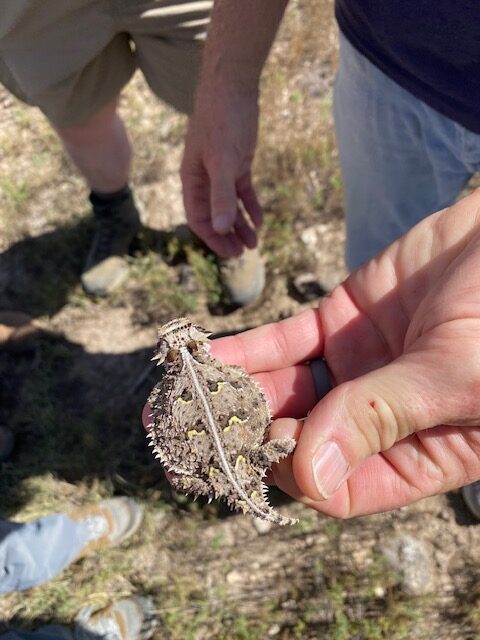A Rogers State University biology professor and his students recently returned from a field trip during which the group got up close and personal with wildlife – very up close and personal.
Dr. Keith Martin led a group of roughly a dozen students to Black Mesa, Oklahoma, to expose them to one of the state’s more unique ecological areas and to give them the opportunity to study the region’s indigenous wildlife.
“Our biology degree has two areas of emphasis – medical/molecular and environmental conservation. The students I took to Black Mesa were the latter,” Martin said. “While learning about conservation and ecology in class is fine, going outside the classroom and into an actual ecoregion gives students a whole new understanding of things that they just can’t get from reading a textbook or by watching a video.”
Black Mesa is a mesa located in the westernmost part of the state in the Oklahoma panhandle and is an area that also includes Colorado and New Mexico.
For the duration of the trip, Martin and the students camped in tents for a weekend and spent much of the time trapping, identifying and releasing native wildlife, such as bats, rats and much more.
“Black Mesa is one of the state’s more unique ecoregions and the wildlife there reflects that,” he said. “Everything we do is ‘catch and release’ in that the students will learn to capture some mammals by hand, which can be hilarious at times, but it also gives them the practical experience of safely – to them and the animal – capturing wildlife.”
Much of the group’s activity takes place at night, as – with Black Mesa being a desert-like environment – much of the wildlife becomes more active after dark.
“At night, we go on a road cruise, which is basically traveling the roads to survey snakes, lizards, rats, etc.,” Martin said. “It’s a great experience for the students and allows them to see animals that aren’t out during the day.”
Animals such as kangaroo rats and bats, which the group also humanely and safely captures, identifies and releases, he said.
In addition to their interactions with the local wildlife, the group also does “a lot of hiking,” Martin said, as Black Mesa boasts the highest elevation in the state.
“It was a very good trip. The weather cooperated, and that helps the animals to cooperate,” he said. “It was cool, a little damp because there’d been a good summer of rain, which meant the animal activity was up on that trip and we got to see more of the critters on this trip than we have in the last couple of trips.”
Dr. Martin has taken students on these ecoregion and wildlife interactive trips for decades, dating back to before he worked at RSU in 1988 when he was working for Owasso Public Schools and took a group of junior high students out into the field.
Since then, he’s taken a group of students every few years to a unique ecoregion within the state to expose them to nature in a way they can’t get in the classroom. In addition to Black Mesa, Martin has taken students to the Ouachita National Forest, the Ozark Highlands Ecoregion along the Arkansas state line, and the Tallgrass Prairie, northwest of Tulsa.
Student response to the trip is consistently high, Martin said, with many citing it as their “favorite experience” of the course.
“When we get course evaluations, the field trips are always mentioned,” he said. “Comments range from the experience giving students ‘incredible real-life experience’ to the personal application and rigorous focus on the subject matter being the best kind of learning to even ‘more classes should follow this format and offer more hands-on experiences.’”
Student praise aside, Martin said the trips are taken to give the students a competitive edge in real life applications of their degrees as well as introducing them to previously unknown parts of the state.
“Many of the students have no idea that these kinds of habitats exist in Oklahoma,” he said. “Black Mesa, for example, is a rocky, mountainous habitat, very desert-like, and it’s relatively the same now that it was 150 years ago, which makes it a one-of-a-kind learning experience for the students.”
Rogers State University’s Bachelor of Science in biology, environmental conservation option, emphasizes taxonomy and game management and includes courses in ecosystem management, landscape ecology, plant and animal toxicology, aquatic biology and threats to diversity.
Dr. Keith Martin retired in May 2023 from his full-time role at RSU as dean of the College of Arts and Sciences and professor of biology. He continues to teach courses at Rogers State as a professor of biology. He earned a Bachelor of Science in biology – education and a Master of Science in biology – higher education, both from Northeastern State University. He then earned a Ph.D. in wildlife and fisheries ecology from Oklahoma State University.
He came to RSU in 1990, serving as an instructor of biology until 2000. From 2001-2005, he served as an assistant professor of biology, promoting to associate professor of biology in 2006. He became a professor of biology in 2008.
From 2004-2005, Martin served as interim department head for the Department of Mathematics and Science. From 2007-2008, he was department head of the Department of Mathematics and Science. From 2008 to 2023, he has served as dean of the College of Arts and Sciences (formerly the School of Arts and Sciences).
For more information about RSU’s Biology degree programs, visit www.rsu.edu/biology.

